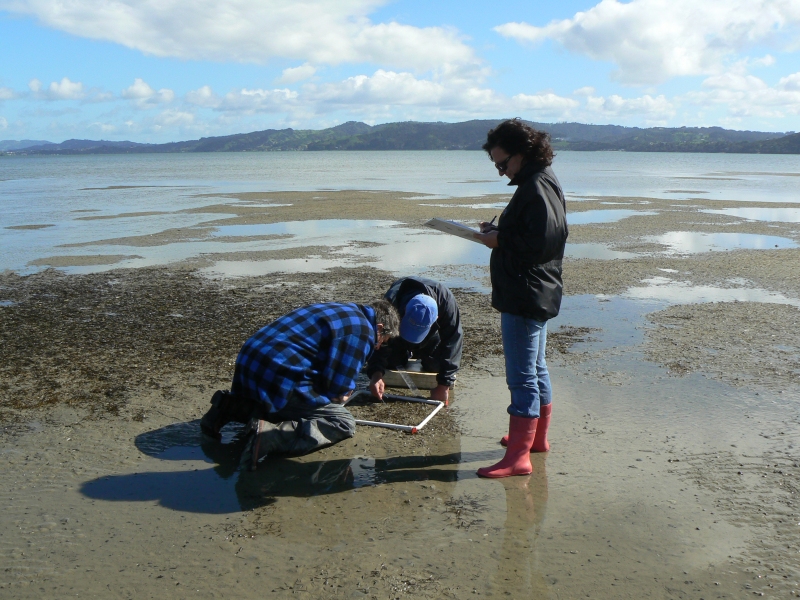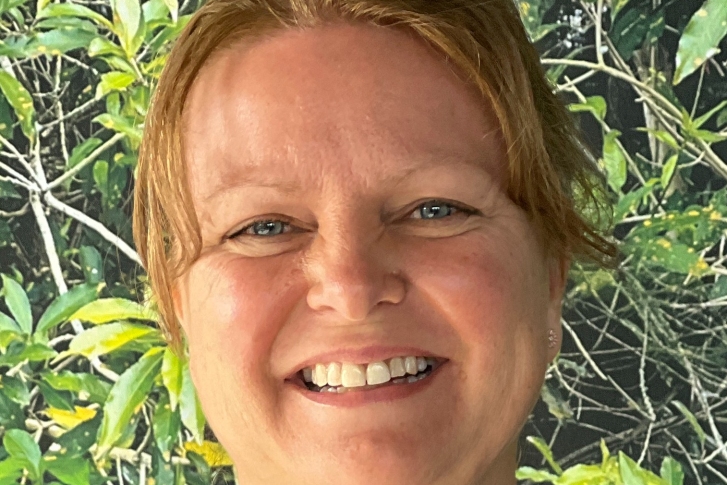Seagrass beds form an important undersea habitat for small fish, seahorses and shellfish in New Zealand.
A large amount of New Zealand’s seagrass habitat has been lost as a result of human activities, with only small pockets remaining in some harbours. NIWA is leading a small-scale transplantation trial in Whangarei Harbour to determine whether transplanted seagrass can survive, and hopefully thrive, at a former site.
The issue
Many of New Zealand’s seagrass beds have been lost and degraded, mainly as a result of increased sediment inputs. This is worrying because they:
- contribute to the healthy functioning of our harbour and estuary ecosystems
- provide a home to many important marine animals, including juvenile snapper, trevally and grey mullet.
Seagrass beds once covered large areas of the outer Whangarei Harbour, covering an estimated 14 square kilometres before the early 1960s. Human activities in the upper-mid part of the harbour resulted in the almost complete loss of this important undersea habitat. Since the 1970s, small pockets of seagrass have struggled for survival on the southern shores of Whangarei Harbour. In recent years, there have been encouraging signs that improving water quality is enabling the slow expansion of these pockets.
With ongoing work to mitigate and reduce contamination of harbour waters by Northland Regional Council, it’s hoped that seagrass might eventually recolonise all of its former sites. However, there is concern that the natural recolonisation process may be severely constrained because of a lack of plant mass to grow from.
The New Zealand seagrass Zostera muelleri grows mostly by clonal spread (plants send out new root runners into nearby bare sediment) but only rarely appears to set seed, enabling the colonisation of more distant sites. Because of this habit, Whangarei Harbour’s seagrass meadows may need a helping hand, in the form of transplantation to former sites, to return to their former extent. It’s hoped that larger meadows can ultimately develop from relatively small transplanted patches through the process of clonal spread, provided conditions are suitable for growth.
Our approach
Since 2004, Northland Regional Council, NIWA and the Whangarei harbour kaitiaki roopu have been working together to:
- document the historical extent and losses of the harbour’s seagrass meadows,
- identify the cause of decline, and
- assess the feasibility of seagrass restoration.
In the latest phase of this work, NIWA has led a small-scale transplantation trial to determine whether transplanted seagrass can survive, and hopefully thrive, at a former site. Small plots of seagrass (0.5 x 0.5 m) were extracted from a healthy pocket of remnant seagrass and carefully transplanted to a former site. A total of 18 square metres of seagrass was transplanted.
Both sites are in the southern part of the harbour:
- the remnant (donor) site is at One Tree Point
- the transplant (recipient) site is on the Takahiwai sandflats, an area where formerly there were extensive seagrass meadows.
The trial also incorporated testing of three alternative transplantation methods to identify the most effective method:
- artificial mats of seagrass – aimed at providing protection for clumps of natural specimens planted in amongst its canopy
- ‘sods’ (blocks of intact plants and sediment)
- ‘sprigs’ (clumps of intact plants with sediment washed from roots).
The trial was set up in April 2008 and has been monitored regularly; every three months in Year 1 and every six months in Year 2. We have monitored both the success of the transplants and the recovery of the remnant site following plant extraction. This has included monitoring the condition of the transplanted seagrass’s internal photosynthetic system (using a pulse-amplitude modulated (PAM) fluorometer) as an indicator of plant health. Low PAM readings indicate problems with the plant’s ability to perform photosynthesis; the most critical function for plant growth and survival.
The results
The results of the trial to date are very promising.
Transplanted seagrass
- Transplanted seagrass, particularly from the ‘sod’ and ‘sprig’ plots, has thrived and spread from the mid-tide zone where it was transplanted.
- Despite the relatively small area (18 square metres) of seagrass transplanted, seagrass has spread to cover another 2400 square metres (nearly 40%) of the transplant site at Takahiwai. Some of this increase may be natural recovery, but we know from monitoring control plots that at least half is the direct result of transplanting.
- Monitoring of photosynthetic performance has also indicated an improvement in the health of the plants at the transplant site. This suggests that conditions for growth are continuing to improve at this site.
Remnant (donor) seagrass sites
- Over at the One Tree Point remnant site, where seagrass was harvested for transplanting, monitoring showed that the extracted plots recovered fully within nine months.
- Plots for transplant were extracted from the densest part of the meadow and recolonisation occurred through clonal spread.
- As anticipated, most of the recolonisation took place during spring and summer, 6-9 months after extraction. During the winter, growth of plants at both sites was negligible due to seasonal dormancy.
Where to from here? We’ll monitor the current trial for at least a second year to confirm the longer-term success of the transplants and to document further spread of the seagrass meadows at the former, Takahiwai, site.
Plans are also underway for a larger-scale transplanting operation to be carried out in April 2010 to substantially enhance seagrass cover across a much larger area of the Takahiwai sandflats.
External Organisations Involved:
Northland Regional Council


